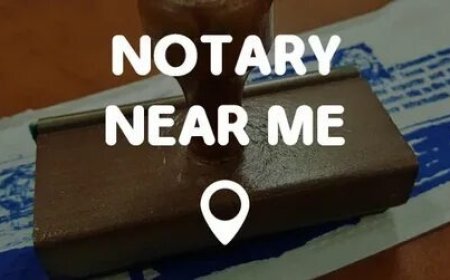Can You Do Therapy Without Talking? 4 Alternative Techniques That Work

Therapy has long been associated with sitting across from a counselor and talking through emotions, traumas, and daily struggles. But what if words arent your strong suit? What if verbalizing feelings feels overwhelming or insufficient?
The good news istherapy doesnt always require talking. Many people find relief throughalternative therapeutic techniquesthat bypass traditional conversation. Whether you're nonverbal, introverted, or simply looking for different ways to heal, thesefour evidence-based methodscan be just as effective.
Why Consider Non-Talk Therapy?
Before diving into alternative techniques, lets explore why someone might prefer therapy without talking:
-
Difficulty expressing emotions verbally
-
Trauma thats hard to put into words
-
Neurological conditions (e.g., autism, selective mutism)
-
Cultural or personal discomfort with verbal therapy
-
A need for somatic (body-based) healing
Now, lets explorefour powerful non-verbal therapy techniquesthat work.
1. Art Therapy: Healing Through Creativity
What Is Art Therapy?
Art therapy usesdrawing, painting, sculpting, and other creative processesto help individuals express emotions, reduce stress, and gain insight. Since it doesnt rely on words, its ideal for those who struggle with verbal communication.
How It Works
-
A therapist guides you in creating art that reflects your emotions.
-
The focus is on theprocess, not the final product.
-
Colors, shapes, and symbols can reveal subconscious feelings.
Benefits
? Reduces anxiety and depression
? Helps process trauma nonverbally
? Improves self-awareness and emotional release
Who Its Best For
-
Children and teens
-
Trauma survivors
-
People with PTSD or anxiety disorders
2. Music Therapy: The Power of Sound and Rhythm
What Is Music Therapy?
Music therapy involveslistening to, creating, or moving to musicas a way to improve mental health. It can regulate emotions, reduce stress, and even help with physical rehabilitation.
How It Works
-
A therapist may useguided music listening, songwriting, or drumming.
-
Rhythms and melodies canalter brainwave patterns, promoting relaxation.
-
Lyrics (if used) can help articulate feelings indirectly.
Benefits
? Lowers cortisol (stress hormone) levels
? Enhances mood and emotional expression
? Supports cognitive function in dementia patients
Who Its Best For
-
Individuals with depression or anxiety
-
Stroke or brain injury patients
-
Those with developmental disabilities
3. Movement & Dance Therapy: Healing Through the Body
What Is Dance/Movement Therapy?
This approach usesbody movementto foster emotional, cognitive, and physical integration. Instead of talking, youexpress feelings through motion.
How It Works
-
A therapist observes and guides movements to help release stored emotions.
-
Techniques may includemirroring, improvisation, or structured dance.
-
Focuses on themind-body connection.
Benefits
? Releases trauma stored in the body
? Boosts self-esteem and body awareness
? Reduces symptoms of PTSD and depression
Who Its Best For
-
People with eating disorders
-
Trauma survivors
-
Those with chronic pain or tension
4. Animal-Assisted Therapy: Emotional Support Without Words
What Is Animal-Assisted Therapy?
Interacting withtherapy animals (dogs, horses, cats, etc.)can provide comfort, reduce loneliness, and lower stressno talking required.
How It Works
-
A trained animal (and handler) helps create a calming environment.
-
Activities may includepetting, walking, or simply being presentwith the animal.
-
Animals provideunconditional acceptance, reducing anxiety.
Benefits
? Lowers blood pressure and stress hormones
? Eases symptoms of depression and PTSD
? Encourages social interaction in autistic individuals
Who Its Best For
-
Veterans with PTSD
-
Children with autism
-
Elderly individuals facing loneliness
Final Thoughts: Is Non-Talk Therapy Right for You?
Traditional talk therapy isnt the only path to healing. If youve struggled with verbal expression or want to exploredifferent therapeutic avenues, thesefour techniquesart, music, movement, and animal-assisted therapyoffer powerful alternatives.
The key is finding whatresonates with you. Whether through a paintbrush, a melody, a dance, or a therapy dogs companionship, healing can happenwithout saying a word.
AtGjds, we believe inpersonalized mental wellness. If you're curious about non-verbal therapy options, consider exploring these methods with a licensed professional.
Frequently Asked Questions (FAQs)
Q: Can non-talk therapy replace traditional therapy?
A: It depends on the individual. Some people use it as acomplementto talk therapy, while others find itsufficient on its own.
Q: How do I find a therapist specializing in these techniques?
A: Look forlicensed art therapists, music therapists, or certified animal-assisted therapy providers. Psychology Todays directory and professional associations can help.
Q: Are these therapies scientifically proven?
A: Yes! Studies showart, music, dance, and animal-assisted therapieshave measurable benefits for mental health.









































